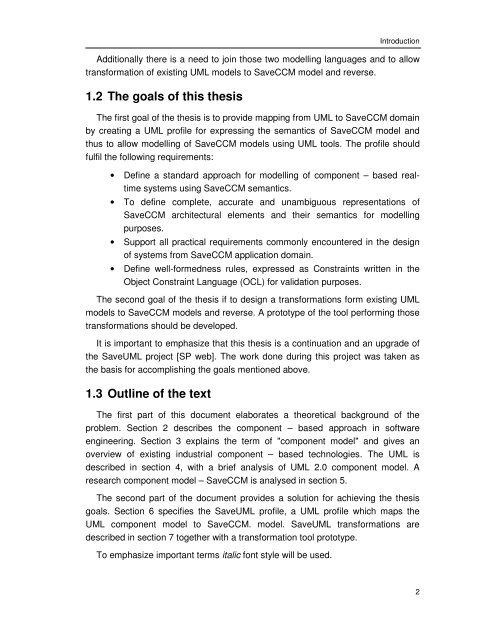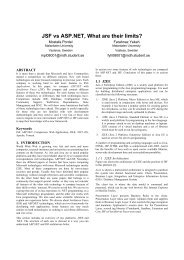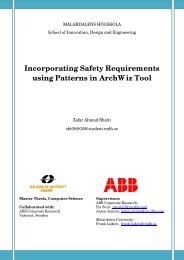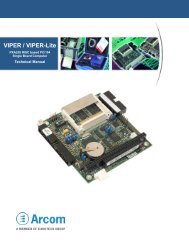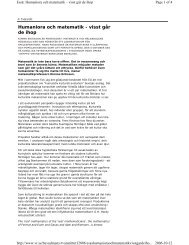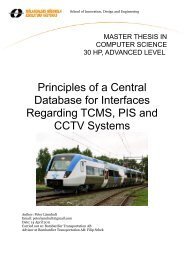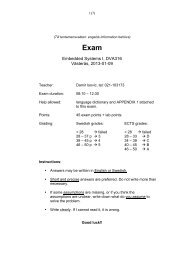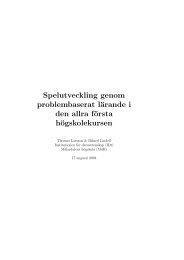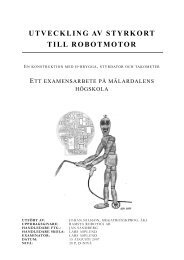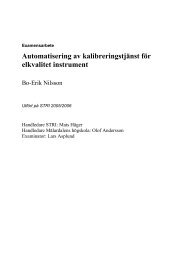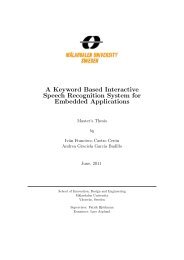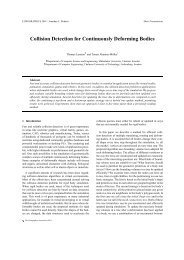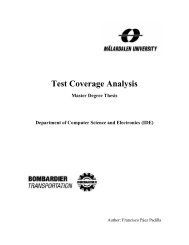UML PROFILE FOR SAVECCM - Research
UML PROFILE FOR SAVECCM - Research
UML PROFILE FOR SAVECCM - Research
Create successful ePaper yourself
Turn your PDF publications into a flip-book with our unique Google optimized e-Paper software.
Introduction<br />
Additionally there is a need to join those two modelling languages and to allow<br />
transformation of existing <strong>UML</strong> models to SaveCCM model and reverse.<br />
1.2 The goals of this thesis<br />
The first goal of the thesis is to provide mapping from <strong>UML</strong> to SaveCCM domain<br />
by creating a <strong>UML</strong> profile for expressing the semantics of SaveCCM model and<br />
thus to allow modelling of SaveCCM models using <strong>UML</strong> tools. The profile should<br />
fulfil the following requirements:<br />
• Define a standard approach for modelling of component – based realtime<br />
systems using SaveCCM semantics.<br />
• To define complete, accurate and unambiguous representations of<br />
SaveCCM architectural elements and their semantics for modelling<br />
purposes.<br />
• Support all practical requirements commonly encountered in the design<br />
of systems from SaveCCM application domain.<br />
• Define well-formedness rules, expressed as Constraints written in the<br />
Object Constraint Language (OCL) for validation purposes.<br />
The second goal of the thesis if to design a transformations form existing <strong>UML</strong><br />
models to SaveCCM models and reverse. A prototype of the tool performing those<br />
transformations should be developed.<br />
It is important to emphasize that this thesis is a continuation and an upgrade of<br />
the Save<strong>UML</strong> project [SP web]. The work done during this project was taken as<br />
the basis for accomplishing the goals mentioned above.<br />
1.3 Outline of the text<br />
The first part of this document elaborates a theoretical background of the<br />
problem. Section 2 describes the component – based approach in software<br />
engineering. Section 3 explains the term of "component model" and gives an<br />
overview of existing industrial component – based technologies. The <strong>UML</strong> is<br />
described in section 4, with a brief analysis of <strong>UML</strong> 2.0 component model. A<br />
research component model – SaveCCM is analysed in section 5.<br />
The second part of the document provides a solution for achieving the thesis<br />
goals. Section 6 specifies the Save<strong>UML</strong> profile, a <strong>UML</strong> profile which maps the<br />
<strong>UML</strong> component model to SaveCCM. model. Save<strong>UML</strong> transformations are<br />
described in section 7 together with a transformation tool prototype.<br />
To emphasize important terms italic font style will be used.<br />
2


